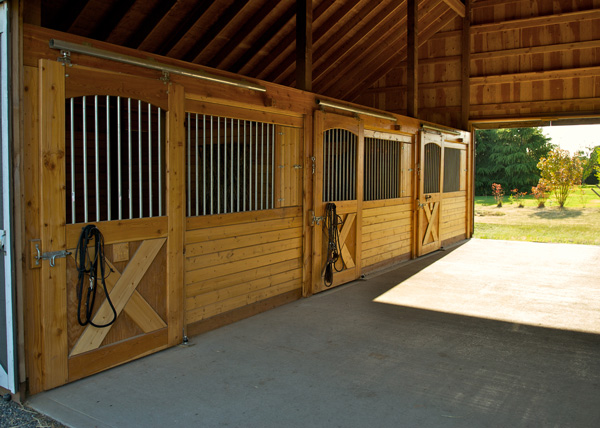
Most horse owners use some type of labor-saving equipment or machinery to make management tasks easier. These labor-savors may range from a 4-wheeler to pull a hay cart or a small manure spreader to a small tractor for powering a larger manure spreader or front-end loader, to a larger tractor to handle big round bales.
Golf carts are versatile conveyances and are used on many horse farms for all kinds of things, including exercising horses. “They are also useful for transporting and delivering, and certainly handy as a way to get from point A to point B,” says Bob Coleman, State Extension Specialist at the University of Kentucky.
“If you have a second barn and all the feed storage and other items are at the main barn, the golf cart is a way to easily go back and forth. It’s an efficiency issue; a person could walk that distance, but if you have to walk it 4 or 5 times a day and you’re in a hurry, the golf cart is very handy. On most horse farms that I visit, of any shape or size, the thing that people are most short on is time. If they have to travel around the farm or barnyard, or have to carry something here and there, the golf cart makes it quicker and easier,” says Coleman.
“If you have horses that are quiet and easy to handle and you have to move them from one place to another, one or two people on a golf cart can lead them. I have been on some farms where I’ve seen one person driving and one leading and they have two horses behind them for exercise. They can go a set speed to exercise young horses, and the advantage over longeing, mechanical walkers or round pen work is that they can be out on a larger track, going in straight lines which is easier on leg joints than going in circles, and they don’t have to saddle up a pony horse. The golf cart doesn’t get as tired as a pony horse if you have multiple youngsters to exercise!”
He watched one gentleman exercise a group of yearlings, one at a time, doing a lot of traveling in straight lines on nice ground. “This is ideal for a young horse, traveling straight, and it is good exercise and good training. The horses enjoy it and can get pretty frisky when they are fit. At one place, when I took my students out there, some people at the farm were wrapping legs and preparing the horses to go for exercise. The students were very interested in what they were doing, and then they led the horses out of the barn and put a handler in the back of the cart and a driver, and off they went, leading the horse. The students were fascinated by what they saw,” says Coleman.
This works, but the horses have to learn their limitations and the place where they are supposed to be, following quietly behind the cart. “It’s all about the horse learning patience and respecting boundaries, so this is training as well as exercise for these young horses,” he says. It works best and is safest if you have someone to help you—to hold onto the horses. The horses also must be conditioned/trained to this kind of activity, and comfortable with being led from the golf cart.
There are several advantages to having a handy way to get around the farm, especially if a person is not as fit and sound as he/she once was; the golf cart can be a great tool. “Just going from the house to the barn, or taking a tour to check on the mares and foals, etc. can be hard for some people, and this gives the mobility.” It enables a person to keep doing the daily chores and to check on the horses as often as they should be checked.
“If a person has all the help in the world on an extensive farm, they can do it certain ways, but if it’s a minimal operation (which many horse places are), you don’t have a lot of help. You do it all yourself or it doesn’t get done, so you have to be as efficient as possible. Thus the golf cart can have an important place. Safety is still a priority; you should not tie the horse to the golf cart. But mechanization has many benefits,” Coleman says.


